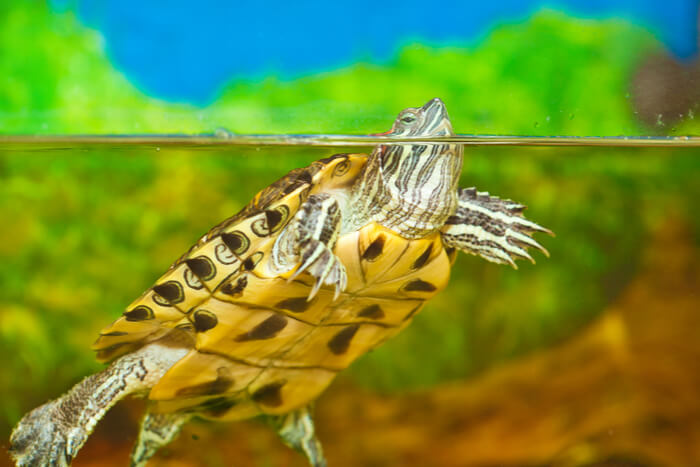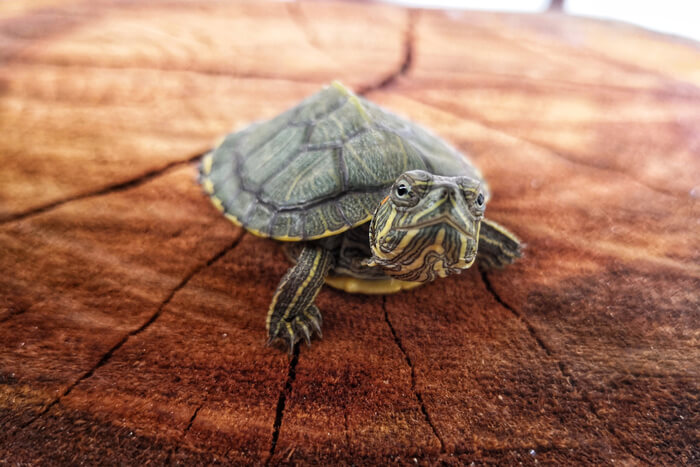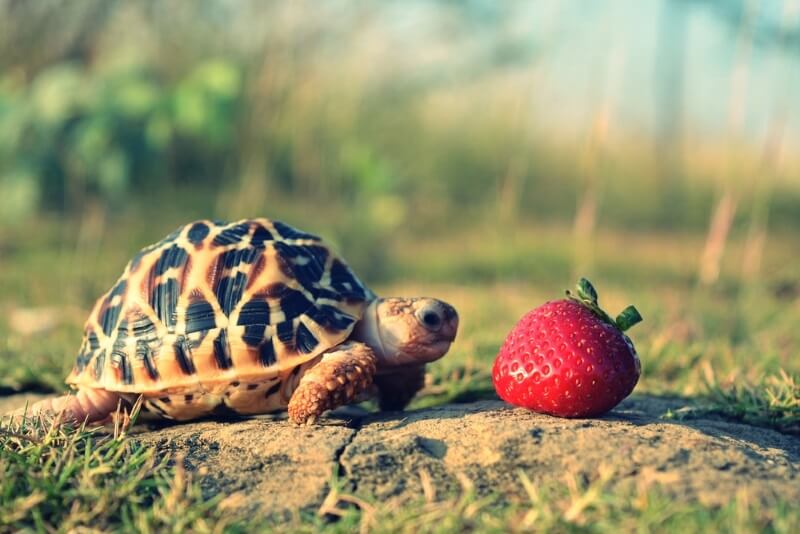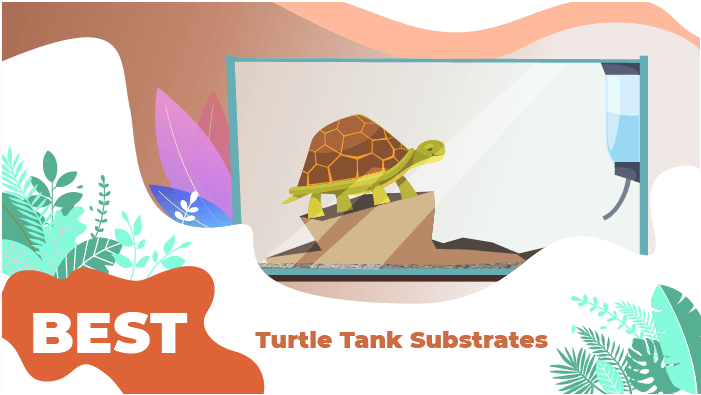Taking Care of a Red Eared Slider: Care, Lifespan And Diet
This page contains affiliate links. We may earn money or products from the companies mentioned in this post through our independently chosen links, which earn us a commission. Learn More
Red-eared sliders can make good pets. They have a feisty “stay off my lawn!” type of attitude and great swimming ability. They’re a great deal of fun to watch. This article will help you understand their special needs and decide if they’re the right pet for you.
Care, Lifespan & Cost
Care of a reptile includes providing the right temperature, lighting, humidity, substrate and cage size. Red-eared sliders can live 20 or more years in captivity, so a moderate investment in good care can last a long time. How much is a Red Eared Slider Turtle you ask?
Red Eared Slider Turtle cost anywhere from as little as $20 to $45 for a single turtle.
Also Read: How To Care For A Turtle
Cage size, Setup And Habitat
Red-eared sliders grow to be between 7 inches and 1 foot in length as adults, with females growing larger than males. Keep that in mind for the long-term plans. While a 20-gallon aquarium may be fine for a juvenile, an adult turtle needs at least a 40–60-gallon tank. The aquarium should be tall enough to have water as deep as the full length of the turtle while only being half full.
Also Read: The 5 Best Turtle Tanks
The extra height helps prevent escape, while water the depth of the turtle’s shell length keeps them safe from being trapped upside-down. Of course, deeper water is better since they spend so much time in the enclosure. An adult female will be more comfortable in an aquarium that’s well over 100 gallons.
In the right climate, they can be kept outdoors in a pond. Make sure the pond is deep enough to allow your turtle to avoid predators like raccoons, dogs and birds. If there are fish in the pond, you’ll want to have an extremely large pond. The slider may pick on the fish, and they’re also much harder on water quality than fish.
The walls of the pond need to be tall enough to prevent escape or there needs to be a fence outside the pond. Red-eared sliders are invasive species in much of the world, and if they end up in the wild they can be very bad for the local wildlife. Never release them into the wild. It’s illegal, bad for them and bad for the ecosystem.
Substrate And Furnishings

Any type of substrate in a pond or aquarium should be too large to swallow. Small gravel could be a concern for obstruction of the intestines. The bottom of the aquarium can be left clear, or you can place larger rocks for a better appearance and enrichment. The same rules should apply to the bottom of outdoor ponds.
Also Read: The 5 Best Turtle Tank Substrates
You also need to provide a basking area where the turtle can get out of the water. For aquariums, you can find floating docks or build up rocks for haul-out locations. The turtle should be able to get out of the water on the warm end and cool end of the aquarium. For ponds, place large rocks or logs in the water to allow haul-out and basking.
Temperature
Heat the aquarium water to the upper 70s F. Make sure the submersible heater is shielded to prevent direct contact or chewing of the power cord. Above water, provide a heat source that provides a basking area of 90-95F on one end of the aquarium over the dock area. A powerful heat lamp or ceramic heater can provide the needed heat source, or it may be a lamp that combines heat and UV lighting. Make sure that the lamp is above the level that would allow direct contact.
Outdoors, the sun acts as the heat and UV source in the right climate. In cooler weather, it may be necessary to provide a heat lamp over part of the enclosure. In some climates they’ll do fine outdoors through the winter, but in some areas they must be brought indoors for the winter.
Lighting
Red-eared sliders, like most reptiles, need access to UVB lighting to produce Vitamin D3 and utilize calcium properly. The sun provides the best UV source possible, so that will do well for outdoor turtles (Selleri P and Di Girolamo N. Plasma 25-hydroxyvitamin D3 concentrations in Hermann’s tortoises (Testudo hermanni) exposed to natural sunlight and two artificial ultraviolet radiation sources. AJVR 73(11), 1781-6).
For indoor turtles, provide a UV light for 12 hours a day directly over one of the basking haul-out locations.
Sliders require a relatively high-intensity UV spectrum. Be aware that the UV spectrum wanes long before the light burns out, so it should be replaced every 6 months. For UV lights that will work well for sliders, we’ve created a separate article.
Water Quality
Since they spend the majority of their time in the water, ensuring clean water is important. For aquariums, use a filter specifically designed for reptiles. Reptiles are dirtier than fish, and their filters are designed to work more efficiently. If one can’t be found, then use a fish filter designed for 2-3 times the water volume.
Test the water regularly for ammonia, nitrates, nitrites and pH. Proper filtration and regular water changes are based on the results of the water quality tests.
Temperament

Red-eared sliders are very active, but they don’t like to be handled. They will spend a lot of time swimming around and exploring, but they watched them rather than playing with them.
What Do Red Eared Slider Turtles Eat – Diet
Red eared sliders are omnivores. Their diet needs to be a mix of items for the best health. 30-40% should be made up of a commercial turtle pellet. About 20% should be made up of animal protein, using a mix of earthworms, mealworms, and feeder fish. The remainder of the diet should be plant material.
Salads can be offered daily. Salads start with a base of Romaine lettuce, red-leafed lettuce, green-leafed lettuce, spring mix, or dandelion greens. The occasional addition of collard greens, carrot tops, kale, and mustard greens are good dietary enrichment. Add other vegetables for variety: carrots, cucumber, bell pepper, butternut squash (steamed) and zucchini are all safe for your turtle.
Also Read: The 5 Best Turtle Foods
Rare treats of fruits can be offered, but give them infrequently because the sugar content isn’t good for your turtle’s digestion.
With a good UV source and the proper vegetables, supplements aren’t needed on the vegetables, but if your turtle is a picky eater, then supplementing some calcium and vitamins weekly is beneficial. Always dust calcium on mealworms and earthworms.
Health concerns
Turtles should be seen regularly by a veterinarian. The most common health concerns that you may see include:
- Respiratory infections
- Trauma (animals)
- Ingestion of inappropriate objects
- Nutritional disease
- Shell damage
- Shell infections
- Ear abscesses
- Reproductive disease
- Parasites
Get an annual health exam for your turtle. To find an experienced reptile veterinarian, start your search here.
Summary
Red-eared sliders make interesting pets for people who are up to the responsibility. Need help naming your new friend? See our story for suggestions when naming your pet turtle.
Frequently Asked Questions
Why is it illegal to have a red-eared slider?
It’s not illegal everywhere, but where it is illegal, it’s because their release into the wild is very bad for the native animals in the area. Unfortunately, because of their complex needs and long life, that has happened far too often, and irresponsible pet owners have made it illegal as a result.
Are red-eared sliders friendly?
No, they don’t like to be handled and they frequently try to bite.
Do red-eared sliders need to be in water all the time?
No. They spend a great deal of time in the water, but they need to be provided areas to get out of the water as well.
How do you take care of a red-eared slider turtle?
Proper care for a red-eared slider involved providing the correct lighting, water quality, temperature, diet, and the proper cage with furnishings. If you want details to see if this is something you can handle, see our full article for details.
How long do red eared slider turtles live ?
red eared slider turtle lifespan is 20 or more years in captivity



